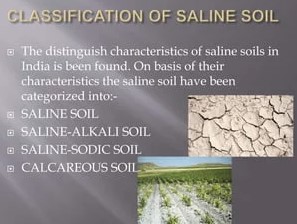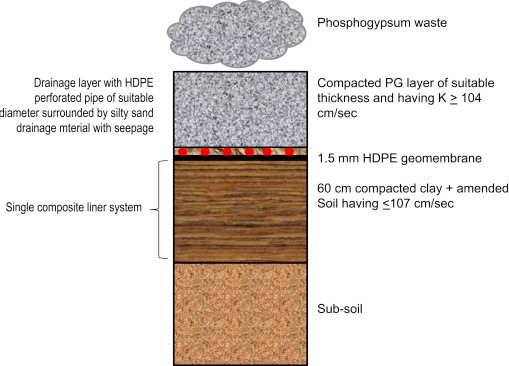Soil is an essential component for all life on earth, and it comes in many different types. Saline and alkaline soils are two of the most common types and understanding the differences between them is important for understanding and managing soil health. In this blog, we’ll explore the differences between saline and alkaline soils, including their chemical composition, their effects on plants, and how to manage them.
Characteristics of saline soils

Saline soils are soils with a high salinity content, containing high levels of soluble salts, such as sodium, chloride, and sulfates. These soils are found in arid and semi-arid regions, where the evaporation of water exceeds precipitation and leaves behind the salts. Saline soils are generally alkaline in nature, with a pH greater than
Saline soils are generally alkaline in nature, with a pH greater than The main difference between saline and alkaline soils is the level of salinity.
Alkaline soils, on the other hand, are soils with a high pH but low salinity levels. Saline soils present unique challenges for agriculture, as the high salinity content can make it difficult for certain plants to survive. To manage these soils, special management practices must be implemented, such as leaching and careful selection of crop varieties.
Characteristics of alkaline soils

Alkaline soils are often characterized by a high pH level, usually 0 or above.
This makes them distinct from saline soils, which have a pH level below 0 and contain high levels of salt. Alkaline soils tend to be highly alkaline due to the presence of calcium carbonate or other basic minerals, while saline soils contain high levels of salt, usually from salt water intrusion.
Alkaline soils can be very difficult to work with, as crops may not grow well in them. However, some plants have adapted to alkaline soils, and they can be quite productive if managed correctly.
Additionally, alkaline soils tend to be more resistant to certain pests and diseases, making them a great choice for those looking for a healthier farming environment.
Effects of salinity on soil quality
The effects of salinity on soil quality is a critical topic to consider in agriculture and land management. Saline and alkaline soils are two distinct types of soils, each impacted differently by salinity. Saline soils contain higher levels of dissolved salts, which affects the plants that grow in them by reducing their growth rate and yield.
Saline soils contain higher levels of dissolved salts, which affects the plants that grow in them by reducing their growth rate and yield. Alkaline soils, on the other hand, have higher levels of bicarbonates which can lead to an accumulation of salts in the soil. This can reduce the soil’s fertility and lead to the loss of moisture, which can further decrease the soil’s ability to support plant growth.
Both saline and alkaline soils can be acidic, and the effects of salinity on soil quality depend on the type of soil and the level of salinity present. It is important to understand the differences between the two soil types in order to properly manage soil quality and maximize the potential of your land.
Nutrient availability in saline and alkaline soils
The difference between saline and alkaline soils is vast and can have a significant impact on the availability of nutrients for plants. Saline soils are characterized by a high concentration of salt, which can cause all essential nutrients to become insoluble and unavailable to plants. Alkaline soils, on the other hand, contain a high concentration of lime or bicarbonate, which can make certain essential nutrients, such as phosphorus, more readily available to plants.
Alkaline soils, on the other hand, contain a high concentration of lime or bicarbonate, which can make certain essential nutrients, such as phosphorus, more readily available to plants. As a result, the type of soil can significantly influence the availability of essential nutrients to plants and, in turn, the health of the ecosystem.
Strategies for improving soil quality in saline or alkaline conditions
Saline and alkaline soils can be a challenge to gardeners in many parts of the world. In this blog section, we will discuss the differences between these two types of soils and the strategies that can be used to improve soil quality in either condition.
Both types of soils can be difficult to work with, as they can be quite compact and may not hold moisture or nutrients well. The key to improving soil quality in either type of soil is to identify and address the underlying causes of the soil condition.
For saline soils, this may mean leaching excess salts with water, while for alkaline soils, it may involve adding organic matter to improve the soil’s structure and reduce the alkalinity. With the right strategies, it is possible to improve the soil quality in saline and alkaline conditions, allowing for better gardening results.
Bottom Line
In conclusion, saline and alkaline soils have distinct characteristics that make them unique from one another. Saline soils have high levels of soluble salts, while alkaline soils have a high pH due to the presence of calcium carbonate.
However, it is important to understand the differences between the two in order to know how to best manage them.
